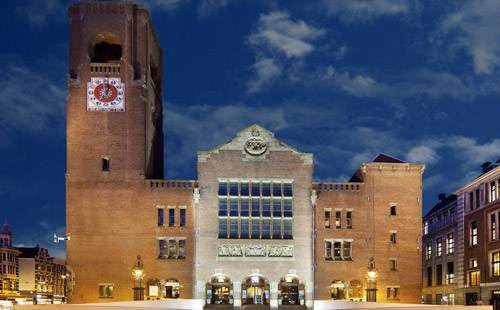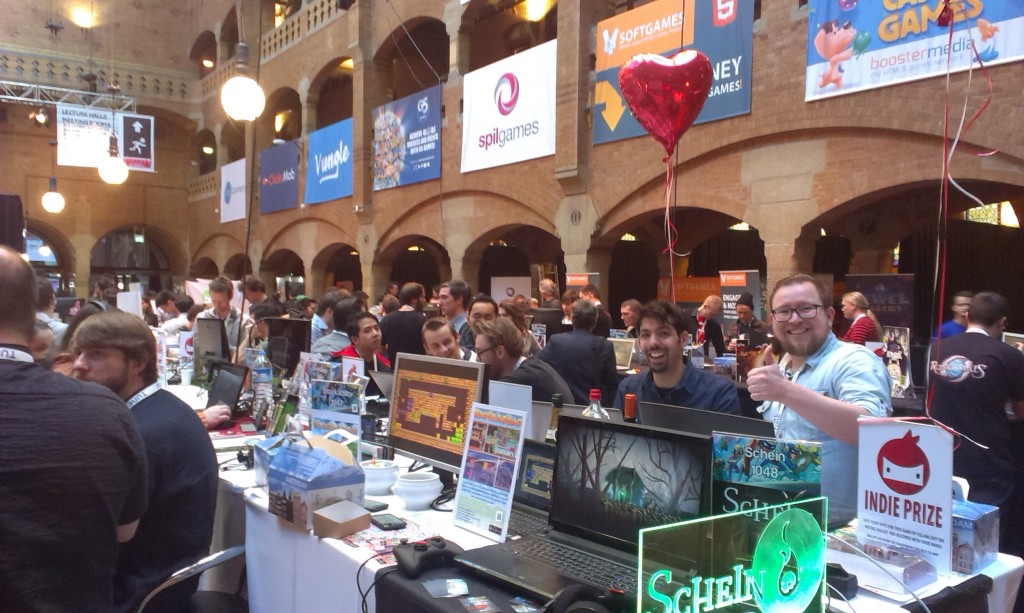Casual Connect Europe just celebrated its biggest event ever with over 2,000 game developers, companies, journalists, and analysts from across the world converging for three days of talks, workshops, and networking in Amsterdam. Put on by the Casual Games Association, this marks the 11th year of the European leg of the global convention, which has its next stops in Singapore May 17-19 and San Francisco July 18-20.
Jessica Tams, founder and managing director of the Casual Games Association, explains why the conference is embracing eSports in this exclusive interview.
 Why is Casual Connect incorporating eSports into its panels?
Why is Casual Connect incorporating eSports into its panels?
ESports is something that really fits into the current audience at Casual Connect because if you think back to the early casual games days, the people who were involved in casual games were doing things similar to eSports in some ways. We did a lot of online contests and a lot of tournaments. King and GameDuell did contests against each other, and that that is very close to what eSports is now. It’s also very close to Social Casino, so we’ve taken that original track and split it off into eSports.
What opportunities do you see for indie games in eSports today?
A lot of eSports games are indie and one of the reasons is because it’s very difficult for an indie developer to get press. One of the best ways for them to actually get press and get notoriety and get some viral exposure for their games is to actually do an eSports contest. This is why you’re seeing a lot of indies that are doing eSports for their games.
How do you see the early success we’ve seen with Hearthstone and Vainglory in mobile opening up opportunities for this Casual Connect audience?
Once somebody who’s a bigger developer comes in and does something cool and enables the market to see that there’s an opportunity there, then it does really open it up for everybody. It makes it a little bit easier, so people will be using eSports and that type of promotion to actually get their games seen. If you think about the new marketing avenues for games, it’s eSports and then YouTube and Twitch gaming. These are two areas that the developers are starting to really focus on because it’s where they’re going to get their users.
When it comes to Casual Connect beyond Europe, is eSports now integrated going forward into all of your programming?
Yes, it is. We’ve actually had eSports content at our other events, but this is the first time we’ve had such a broad and deep range of topics. We also did a report that’s handed out to all the attendees that covers eSports to get everybody familiar with the topic and what’s going on. It really is a large area of growth that we feel that people should be looking into. We will see three days of content in San Francisco, and then that will continue moving forward. We’ll mail out that eSports report to our entire mailing list with some editorial in that report, so people can look for that in their mailboxes.

Virtual reality is another new area for Casual Connect. Outside of Sony and Ubisoft we’re not seeing much publisher support of VR. What does this open up for your Casual Connect audience?
We did some content on VR and AR in San Francisco last year and the thing that developers and indies and everybody should keep in mind about VR and AR is to not get too excited, not yet, because it’s not fully-fledged yet. This is why the publishers are ignoring it. They don’t have an install base yet, so that’s something that developers should definitely keep in mind when they’re designing their games so that they can help port them over when we do know where they should port, and what they should be porting to. Most of them are saying the big opportunity in VR and AR is actually more on the casual side of the games industry, rather than the hardcore side because what makes VR and AR cool is the interaction with other people. They’re going to be playing it on mobile devices and casual games will be a little easier for them to get in and get out of.
One of the top Samsung Gear VR games is Tommy Palm’s Solitaire Jester game, and he spoke about VR here in Amsterdam.
Yeah. Tommy is a big proponent of casual games for VR. He thinks that’s where it is, and he’s a big proponent of casual games.
How do you see VR and AR evolving at your conference moving forward?
For the next two or three years before VR and AR actually hits really big, our approach is to take VR and AR as one of our tracks. So we’re not going to become all VR and AR. It’s a nice global realistic approach on the market as a whole, of which eSports is a part, and YouTube and Twitch gaming is a part, and VR/AR is a part. When somebody’s defining their business, they need to be looking at all different avenues for their games, of which those are all very important.
Where is casual gaming today?
I remember when we first came to Amsterdam 11 years ago, we all talked about soon casual gaming’s going to be mass market; everybody is going to play casual games. I feel like now it’s almost like we made it. Everybody does play casual games. You see kids and parents playing on their phones and tablets. Casual games have really progressed from something that was very unique to something that’s common. Casual games have always existed, but they didn’t have the classification back when everyone played Microsoft Solitaire on their computer. Now that we have smartphones, instead of playing Solitaire people are playing Candy Crush or Clash of Clans.
What are the opportunities today in casual gaming with so much competition?
Yeah, there’s a lot of competition, but there’s a lot more people playing. Every year, there’s always the question: Can developers make it now? And developers can. Every single year I think, “There’s never been a better time to be an independent developer.” You just have to look at where the market is, where the market is going, and how do you fit in. You may have to change your business model and it might be hard, it might be trying to change it up and do something different, but there’s never been a better time.
How have you seen the opportunities open up from the Indie games competition that you do?
So Inde Prize has been a huge success this last year. We’ve done a lot more outreach into the local communities, so we tripled the number of submissions into Inde Prize this year than we had last year. We had well over 300 submissions into Inde Prize for 100 spots. It’s become a fierce competition. The game quality is definitely increasing significantly. And we’re seeing it as a way for publishers and platform holders to talk to all the developers to help them get their games up on their platforms and helping them get distribution with some marketing behind them. We’ve seen a lot of the games come out of the Indie Prize that have been successful. The reason that we have Indie Prize the way that we do with quite a large number of developers is because we feel that the next hit doesn’t always come from the person who just made the last hit. The joy is in the journey of becoming a full-fledged developer and starting from just getting their game into Indie Prize with a couple of people on their team to actually marketing it, and getting it out.
What’s in store for Casual Connect moving forward?
In Europe we have been planning to start touring around cities more frequently, and of course we get stuck in Amsterdam because Amsterdam is a beautiful city and everybody loves Amsterdam, as you can tell from our attendance numbers. It’s a very popular destination, but next year we’re going to Berlin, which is another hotspot in the gaming industry. We’ll start rotating the show more frequently and get some more people involved, make it so that it’s easier for some of the indies to travel in. But we’ll be coming back to Amsterdam, of course, so don’t worry.
What about the U.S.?
We’ll be in San Francisco this year but we’ll start rotating cities in the U.S. as well.
What about Asia?
We’re going to be in Singapore for a couple of years. We have a venue there reserved.
And Tel Aviv?
We’ll go back to Israel again. So this year will be Amsterdam, Singapore, San Francisco, and Tel Aviv.

